The world of RVing….🤯 It’s an incredible opportunity to truly connect with nature, explore stunning landscapes and enjoy the great outdoors. But where do you even start? This RVing for beginners guide goes through just what you need to know to get rolling!

This post may contain affiliate links. For more info, see my disclosures.
When my husband and I started searching RV camping tips for beginners and began the process of getting our first RV, we were met with a loooot of opinions. But the best thing I’ve leaned over the years?
Don’t let anyone else tell you how to camp. Your way of RVing is great! Soak in the info you desire, and let others’ opinions stay with them. 🙂
So, whether you’re researching for solo RV camping for beginners or with your loved ones (furry or human), let’s dive into the basics!
RVing for beginners – welcome!
I’m so glad you’re here! Here’s the story of how I got started RVing (it’s a good one). After countless adventures and dozens of states and even international travel in an RV, these are the best RV tips for beginners that I wish I knew when getting started!
Here’s what I’ve learned so far—from picking the best RV tools to handling the dreaded black tank (yep, we’re going there). Let’s make your RVing adventures fun, stress-free and full of the good kind of memories you’ll cherish for years to come.
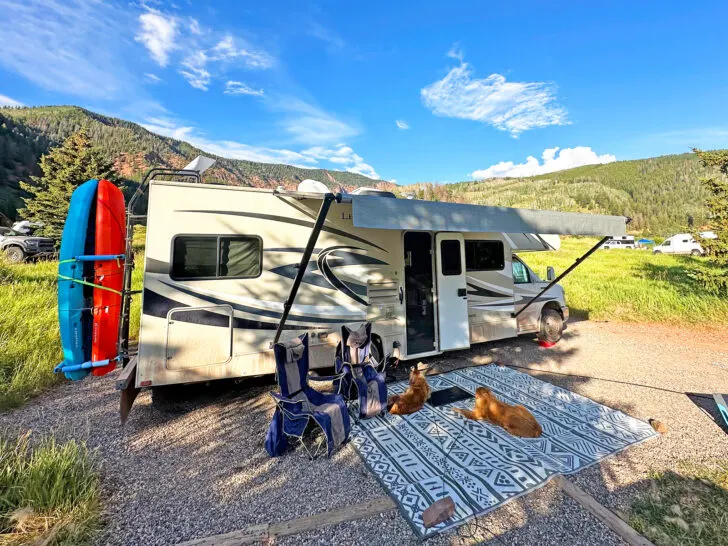
First things first: getting started with RV camping
When we decided to try RV camping, I thought it was just about picking a fun campground or RV trip route and packing snacks. Turns out, there’s more to it! BUT good news – it’s not as complicated as it seems.
My first tip is to start small. Book a campground that’s close to home for your first trip.
Look for one with full hookups (that means water, electricity, and sewer). Being near home gives you a safety net in case anything goes wrong or you forget something important. We did our first overnight less than an hour away, and it was the perfect practice weekend.
Don’t stress about having the “perfect” setup either. You don’t need solar panels or a $3,000 generator right off the bat. Start with the basics: power cords, hoses, leveling blocks (if needed), a surge protector, and some basic RV kitchen accessories. You’ll figure out what you really need as you go.
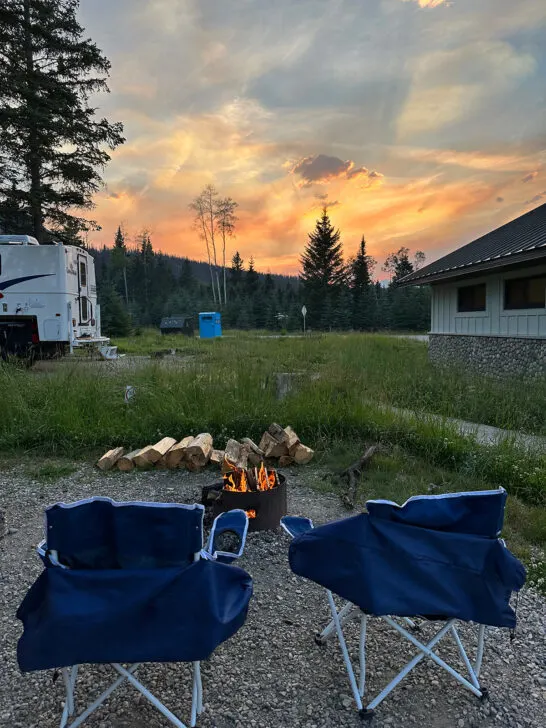
Your first trip: what to expect and how to prep
There’s nothing like the excitement of that first trip. My family was excited, but also we were thinking, “what have we gotten ourselves into??” Here’s what helped us keep things smooth…
🏡 Practice at home. Before our first trip, we set up the RV in our driveway. My husband practiced leveling it, connecting the water hose and using the slides. Just going through the motions gave us a huge confidence boost. Our kids and dogs also got used to being in it, too!
👖 Pack for convenience. Bring cozy clothes, paper plates and easy meals. Don’t forget the RV toilet paper! Keep it simple until you get the hang of things.
✅ Create a departure checklist. This was a game-changer for us. Things like locking cabinets, turning off propane, securing loose items and unplugging everything need to be done before you hit the road. Trust me, hearing a loud crash because you forgot to latch the fridge door once is enough motivation to make a checklist!
Oh, and don’t put loose food on your counters. On our first trip, an onion rolled and almost met my husband’s feet in our motorhome as we drove!
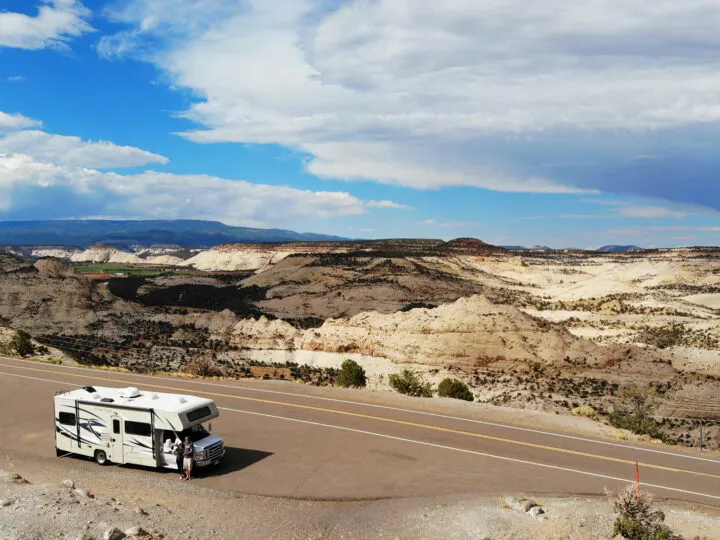
Longer RV trips are possible – with planning!
If you want to travel to far off places in your RV, just know it’s entirely possible! Depending on where you live and where you want to go, just prepare for your trip adequately.
Hint: not everything will go as planned. Like a running into tornadoes and hail on our way to explore 30A’s beaches, or a dust storm while traveling to Zion National Park with kids. Water leaking as you drive through Arkansas or busting your shower door and having to replace it – all of that has happened and a whole lot more!😳
Plan early (a key RV camping for beginners success!)
One of the best RV tips for beginners I can offer is to plan as far in advance as possible. You’ll feel a lot better about it!
- Get the time off work
- Plan your route
- Book a perfect campground (see details later in this guide)
- Prep your food/meals list
- Start packing and loading your RV before the night before, if possible

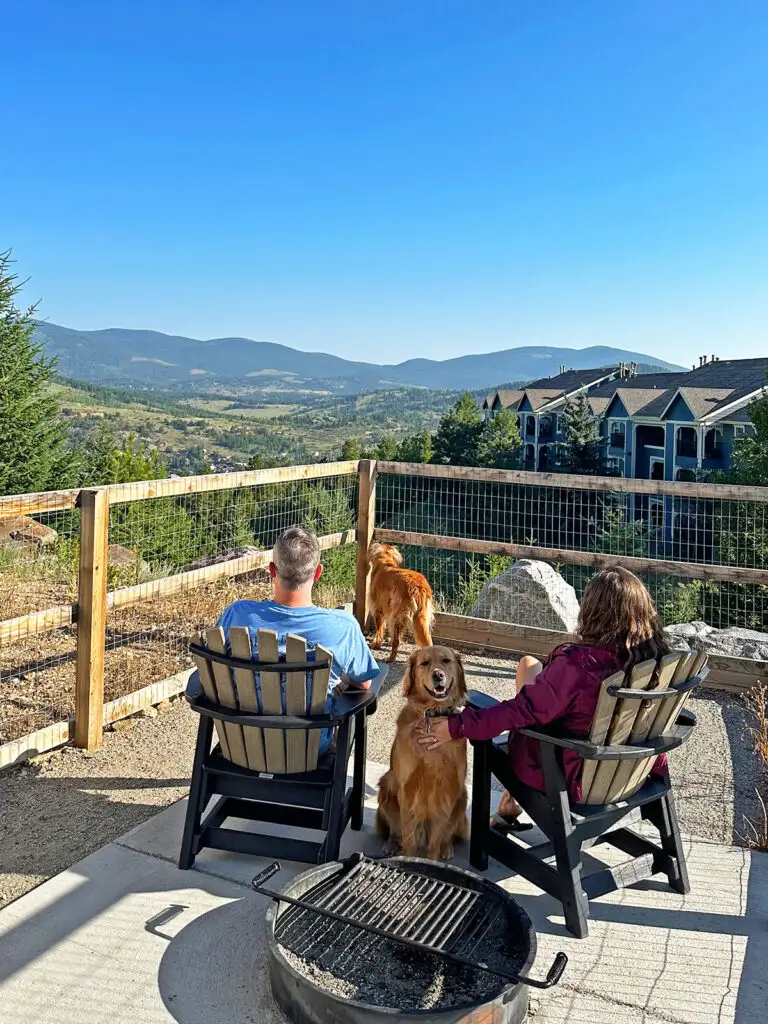
Use the right tools
My husband and I love RV Trip Wizard for planning our RV adventures. It’s helpful for finding RV-friendly routes, checking out campground reviews and setting realistic expectations for how long it will take to drive the RV to a new spot.
RV-friendly routes means RV Trip Wizard helps with oversized vehicles and smaller/narrow roads, low overpasses or gravel that you’ll want to avoid.
Using the right tools is absolutely one of the best RVing for beginners tips for success!
👉Planning an RV adventure? My very favorite planning tool is RV Trip Wizard. It’s perfect for planning an RV-friendly route, selecting a campsite based on reviews and setting realistic timelines for travel days.

For longer trips, use the 3-3-3 rule
Okay, so this rule was created a long time ago by someone who was trying to identify the best way to create an “ideal” camping scenario. The rule says…
🚐 Drive less than 300 miles.
🏕️ Stay no more than 3 nights in a row at a campground.
⏰ Arrive by 3:00pm.
I’ll say that my family rarely ever goes by this rule. 🤣 It’s a great idea for beginners so you’re not overwhelmed and you can enjoy your time camping.
However, when you’re taking road trips like Glacier to Banff, Denver to Albuquerque, or Omaha NE to Acadia National Park ME, it’s a bit challenging to only drive 300 miles per day and always arrive by 3pm.
So, like I said in the beginning of this guide, the way YOU love to camp is the best way!
Things I didn’t know I needed (but now won’t camp without)

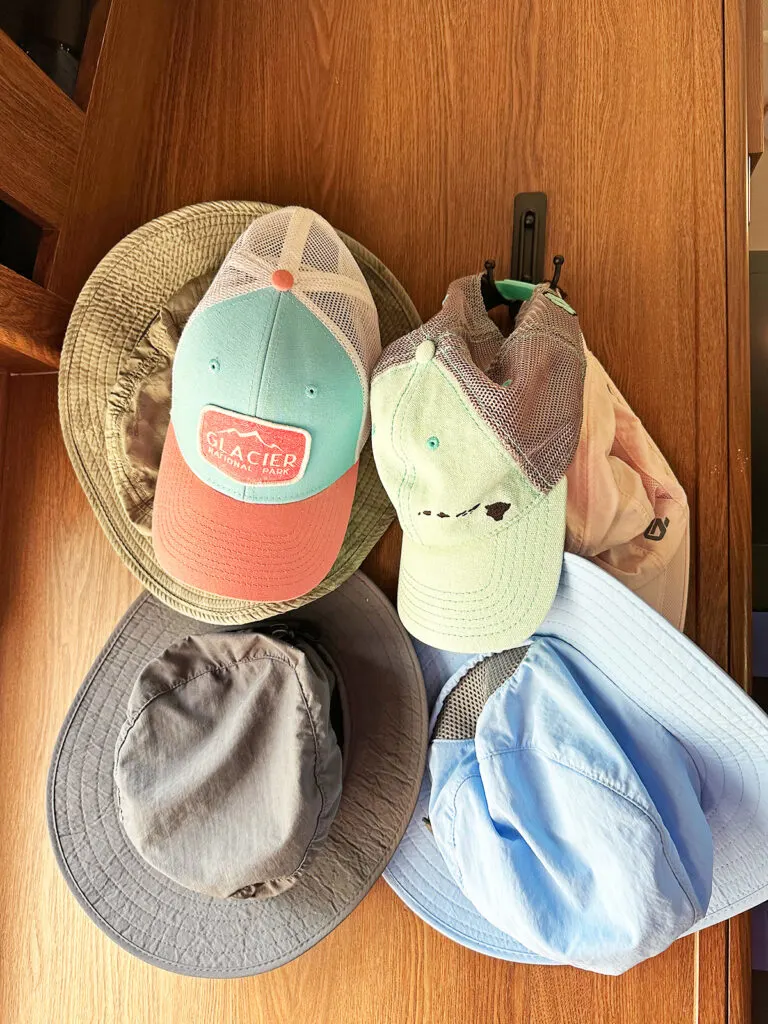
You’ll learn what works for you as you go, but here are a few things I totally love:
- Door and cabinet hooks, puck lights and storage bins. Organizing your space is key. Hooks for towels, hats, coats, etc. Bins for creative storage and easy access. And puck lights in every dark spot!
- Tools. Stock wrenches, screwdrivers, pliers, cordless drill and other handheld tools for on-the-go fixes and adjustments. You’ll need them more than you think.
- Outdoor rug, camping chairs and hammock. These make your little campsite feel like home, especially after a long drive.
- Leveling system. If your RV doesn’t come with a built-in system, you’ll want to grab leveling blocks and a bubble level to help. Keep these somewhere easy to access as this is the first part of your set up. There are also electronic devices, like the LevelMate Pro, to make this step easier and faster. RV sites are rarely exactly level!
Check out these 21 genius camping tips and tricks to save space and stay organized!
RV tips for beginners: how to choose GREAT campgrounds
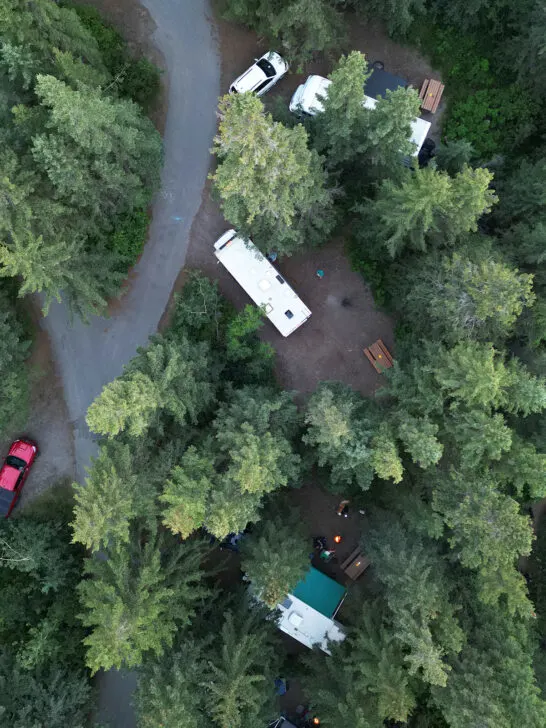
Not all campgrounds are created equal! When RVing for beginners ask for tips on booking the best campgrounds, here’s my recommendations:
- Plan early. I know it’s not always possible, but when you can, book your campsite well in advance. Some high-demand campsites open 6 or 12 months in advance and they even sell out super quick!
- Get full hookups. Water, electric, and sewer connections make life way easier while you’re still learning.
- Read reviews. This sounds basic, but it’s so worth it! If you have a choice between multiple campsites, reading some online reviews can help you make the best choice. I found the best luck using Google reviews and the reviews within RV Trip Wizard.
- Find flat and paved pads. Leveling is way easier when you’re not parked on a slope or gravel. (This is where detailed reviews come in handy!)
- Choose your campsite number using Google maps. Many campgrounds have a map on their website where you can select (or request) a certain site, based on a criteria. Back-in, pull-through and hookup options are usually part of this process. You can often times see the campsite on Google Maps. The key is to select the layers view, where you can see trees, walkways, dog parks, dumpsters, etc. I’ve found this to be very helpful to select a more private or convenient site within a campground.
My husband and I always check campsites for things like site spacing, shade and access to amenities (like a dog park or laundry).
Plan your food
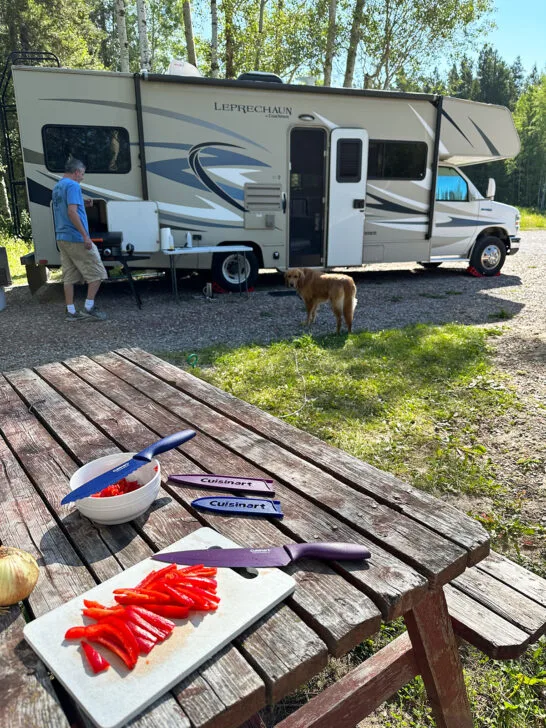
Whether you’re camping solo, going on a trip with your significant other, or are hauling a bunch of kids and pets along for the journey, you’ll want to take some time to plan out what you’ll eat.
I like to stay organized with a spreadsheet of the day’s plan (driving hours, activities, etc.) and then plan for meals around that.
Like are we seeing all the best things to do in Kings Canyon National Park, and need to plan a picnic in the park and an easy dinner? Or maybe we’re visiting charming mountain towns in Colorado, where we intend to eat out for lunch and/or dinner.
Having a daily plan will be helpful, but also allow yourself a ‘plan B’ and some flexibility!
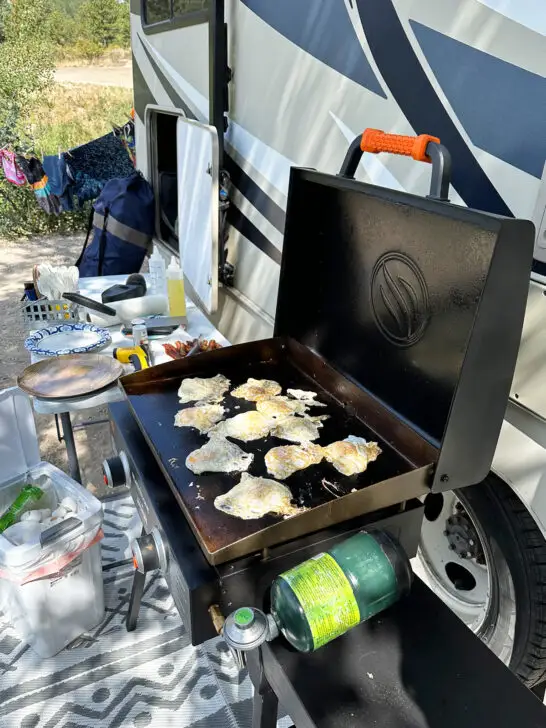
Camping food tips (some of the best RV tips for beginners)
- Pre-cook meals (like pasta salads) or meats (like sloppy joe’s) in advance. Store it in your refrigerator or freezer until you’re ready to use it.
- Prep as much at home as possible. For instance, I typically pre-make breakfast muffins, pancakes or oatmeal protein bars for the first few days of the trip. Remember the freezer is your friend here!
- Easy food is the best food. Whether you want to use the campsite’s grill or you bring your own Blackstone Grill (which I highly recommend!), easy to cook foods are the key here.
- Plan foods that use the same ingredients. For instance, ranch for salads and ranch for walking tacos. Milk for breakfast cereal or for protein smoothies. Tortillas can be breakfast burritos and dinner quesadillas, etc. Less to consider and less to pack!
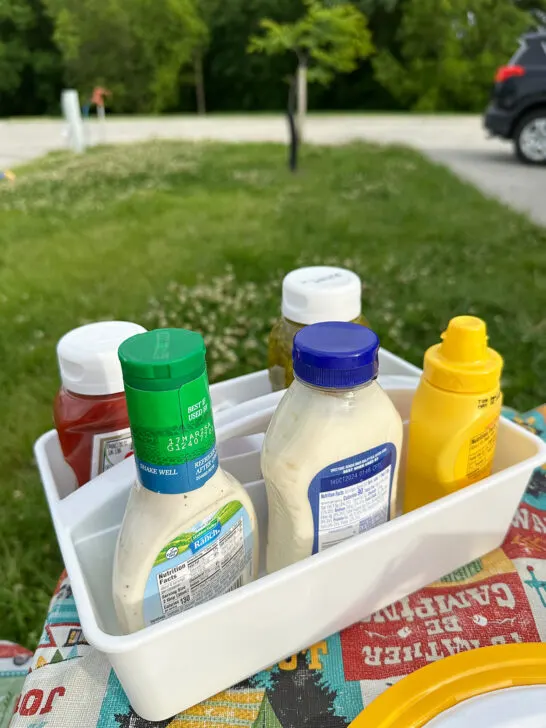
- If you’re staying put for a weekend or just lounging around a campground, a slow cooker can be your friend! Toss food in early in the day and enjoy a delicious meal at night without too much effort.
- Don’t forget condiments and drinks. In the beginning, we never ate cheeseburgers with condiments because we kept forgetting! Ugh!
- Camper freezers are glitchy. Every person I know with an RV struggles with their freezer. If you overload it, things can thaw easily. And don’t try to freeze anything – even ice – quickly if it’s full. Basically, I try to keep ours at no more than 3/4 capacity.
- For longer trips, plan to go shopping. Every time we’re in our camper for more than a week, we plan a shopping trip. The smaller refrigerator just doesn’t hold as much as a standard household one, and we run out of fresh fruit and veggies within a week.
👉Hitting the road in your RV? My husband and I love RV Trip Wizard for planning our routes, checking out campground reviews and setting realistic expectations for how long it will take to actually get there with an RV.
Yes, you have to deal with the black tank
Okay, let’s talk about the not-so-glamorous side of camping: dumping the tanks. It’s probably one of the least fun topics or activities on this RVing for beginners guide!
Maybe rock-paper-scissors for who gets this responsibility? 😉
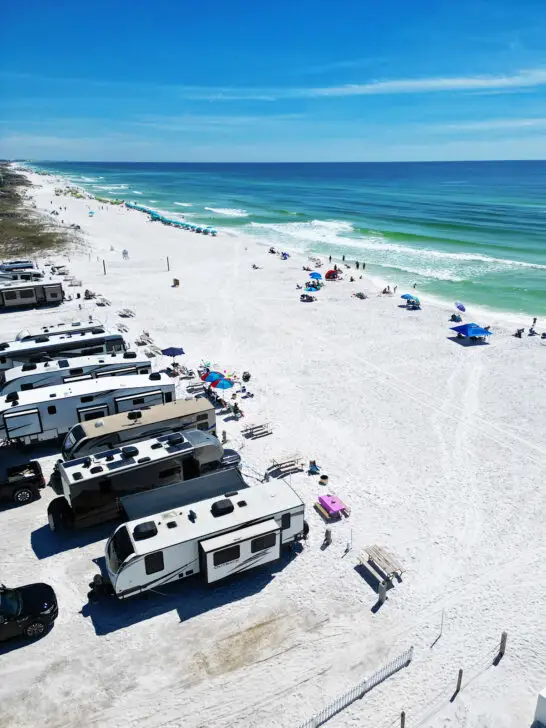
There are two tanks to know about—your gray tank (sinks and showers) and your black tank (toilet). It’s not as scary as it sounds, I promise.
Here’s how we handle it:
- Always wear gloves.
- Dump the black tank first, then the gray. The gray water helps flush out the hose.
- Rinse your hose when you’re done, and stow it in a separate bin from your fresh water stuff.
We also use RV-safe toilet paper and drop-in tank treatments to help control odor and break things down. Oh, and be sure to turn off your bathroom fan when you flush the tank, otherwise the stink from the tank gets sucked up and it’s quite the nasty smell!
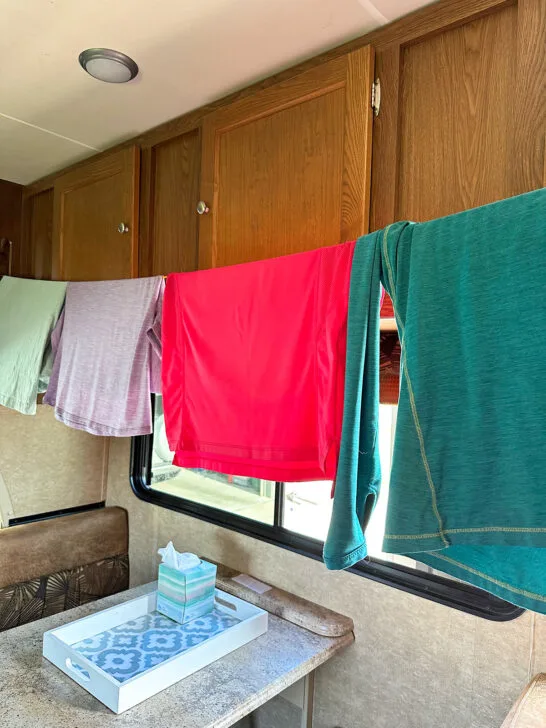
Laundry is definitely a thing for RV camping
If you’re going camping for a few days or a long weekend, laundry isn’t typically a big deal. Be sure to pack a canvas laundry bag to store dirty clothes. Using a canvas bag instead of a basket is a bit more flexible – it can sit on the floor, the driver’s seat, or in the dry shower, for instance.
Pack a roll of quarters and locate laundry services for longer trips. During our week in Las Vegas, when we explored the area like hiking the Calico Tanks Trail, the Seven Magic Mountains and enjoyed the campground pool, the laundry building was super helpful!
Power basics (RVing for beginners must-know)
One of the first things we learned is that RVs can’t run everything at once. If you try to microwave something while using the A/C and running a hair dryer – you’re gonna overload a circuit breaker.
Learn your RV’s amp limit (30 or 50 amps) and try not to run big power items all at once. Use a surge protector to keep everything safe and avoid damaging any electronics during campground power surges.
Also, consider bringing portable power banks just in case.
Cleaning and maintenance tips you’ll actually use
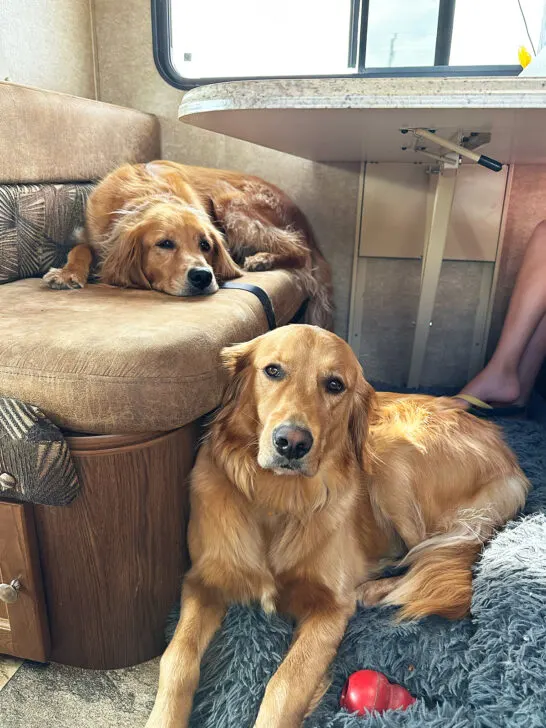
This is one of the areas of RVing that can vary greatly depending on your set up. Get to know your RV and what needs to be done.
Keep your roof and seals in good shape. Water damage is a major RV killer. Every few months, check the seals around your roof vents, windows and doors for cracks or leaks. We reseal ours once a year with some basic caulk to keep the rain out.
Flush your water system regularly. Especially if your RV sits for a while! We sanitize our water lines with diluted bleach once or twice a season, then run fresh water through to rinse. It keeps everything clean and safe to drink.
Clean your RV frequently. A hand-held vacuum is a lifesaver and used daily when camping with dogs!
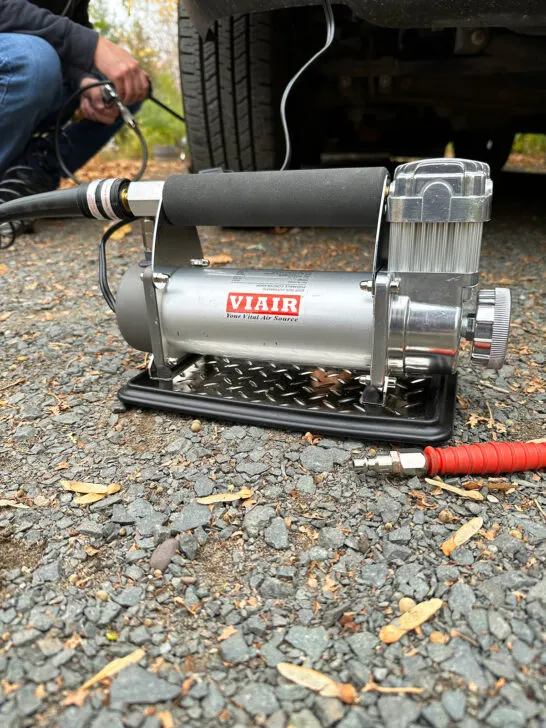
Let’s talk about tire pressure… RV tires can lose air over time, and underinflated tires are dangerous on the highway.
Before my family’s RV adventure through Utah’s Mighty 5 Road Trip, we knew how rare cell phone coverage would be, and also that blown tires are a large percentage of RV crashes, so we made an investment.
My husband purchased and installed this tire pressure monitoring system. This RV hack has been huge for peace of mind, not to mention keeping our family safe as we RV around the USA and Canada.
He can continuously monitor the tire pressure with the attachment to the front dash. It alerts us if a tire is getting low, which can be promptly aired up with a quick stop. He also uses it when leaving a campsite to ensure proper inflation before we head out.
Beginning RVing – that’s a wrap!

RVing is an experience that combines travel and exploration in the very best way possible. The literal smell of fresh air, and freedom and flexibility that this type of travel affords is incredible.
While it can be intimidating at first, beginning RVing isn’t too bad if you just expect things to go wrong, and some things to go right! You’ll learn from your mistakes as you go.
Now it’s time to hit the road, and enjoy RV camping!
Related content you might like:
21 Genius Camper Tips and Tricks to Save Space and Stay Organized
RV Camping Checklist: Printable Packing Lists for Beginners
RVing with Dogs: 33 Practical Tips & Free Essentials Checklist
Find this guide helpful? Save it for later or share it on social media!

